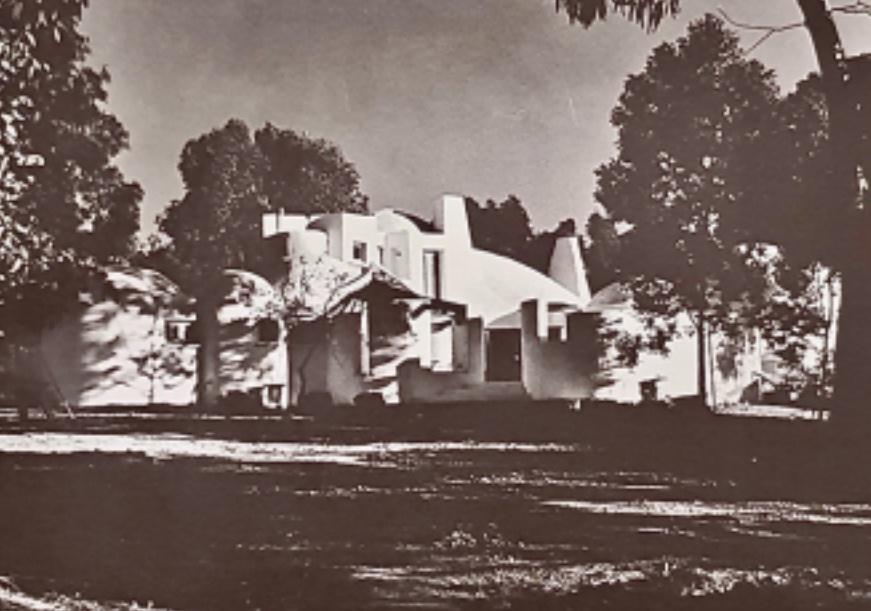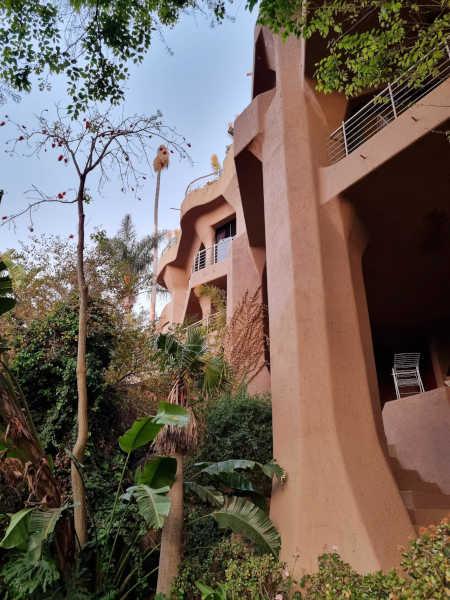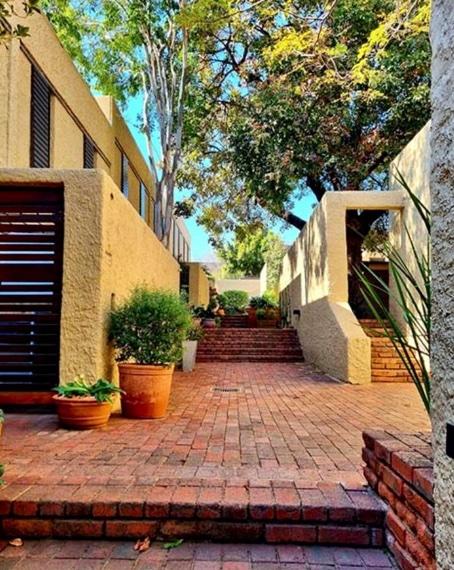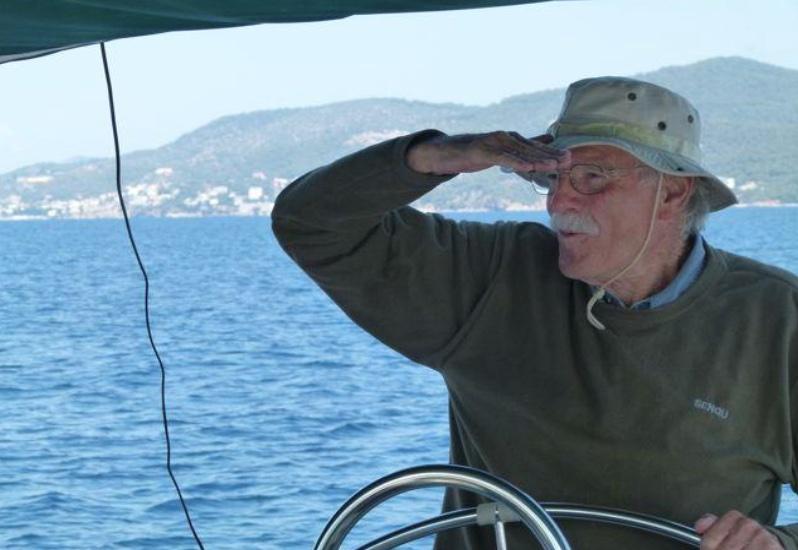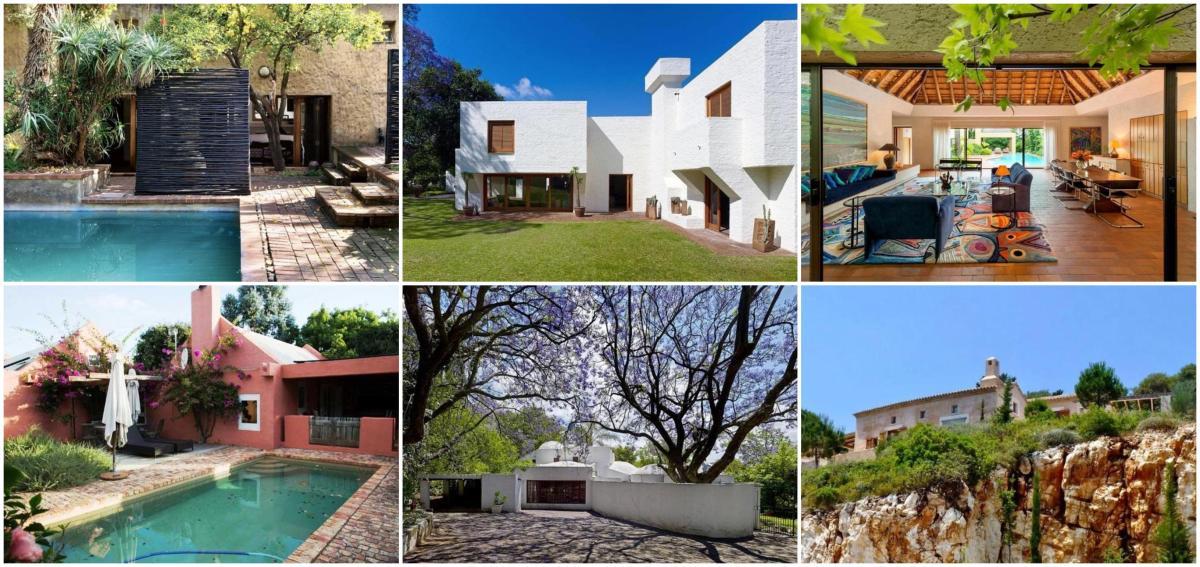
Disclaimer: Any views expressed by individuals and organisations are their own and do not in any way represent the views of The Heritage Portal. If you find any mistakes or historical inaccuracies, please contact the editor.
Michael’s inimitable ink, sepia and watercolour History of Architecture drawings on peerless Watman’s paper, would grace my father’s desk for after-dinner-marking. Michael, as yet unseen by me, was this mythical being, this deaf student who could create such magic. I was enchanted and wanted nothing more than to study this history. Only by studying Architecture would that be possible. The rest, you could say, is history!
Many years later, Michael expressed his gratitude for my father’s support and his after lecture explanations of the slides that had been shown in the dark. After one of his visits to Italy, Michael gave my father a charming small watercolour painting of a street market in Rome in acknowledgment.
I probably first met Michael at the annual final year party at my parent’s house. I was struck by his good looks, his height and his shyness, as well as my own terror of not being able to understand him and having to remember that one needed not to shout but to enunciate words clearly for him to understand what was being said. How frustrating that must have been for him, though he never showed it.
As time passed, I became increasingly aware of his wonderful buildings – rough plastered, thick walled, shuttered houses in particular. Michael’s versatility was shown in the amazing variety of his projects. The Goodman House, curvilinear in plan, with its brick walls rising Zimbabwe-like out of the rocks, the complex vaults and Cycldian island quality of the Gage House, the barrel vaults of the Moravian Mission, the architectural ruggedness of House Smithers, the Rudolf Steiner quality of the towering Myhill House, the amazing alterations and additions he did to so many houses. By contrast, the immaculate Protector Factory and then the regional quality of the holiday houses in Greece. Many were arranged around courtyards and extended into the landscape with pergolas and terraces. His sister Anne set many of them appropriately into gardens.
House Gage (Artefacts)
House Myhill (Artefacts)
The influence of Greece in his architecture and of his wonderful understanding of the making of intimate private and shared public spaces was never more apparent than at The Courtyards in Craighall Park. Sadly, despite its popularity as a much-wanted address, his example was not followed by other developers. I had the good luck to design a little garden for my niece Victoria, in one of them.
The Courtyards, Craighall Park (Wallace Honiball)
In 1978 after a variety of unsuccessful partnerships, I met and formed a partnership with Marcus Holmes to create Fassler Kamstra and Holmes. Michael was a huge influence on Marcus. He had worked in the Sutton and Walker office during his university years. When Michael was in Joburg, he would visit our office in Orange Grove and top it up with lunch in Norwood. I remember one story that Marcus used to tell of how on one occasion when a client complained that their house was too noisy, Michael clapped his hands, put his hands behind his ears and said “but I can’t hear anything!”
On leaving our practice in 1998, I gave Marcus Michael’s Roman watercolour. After Marcus’ untimely death in 2022, I gave it to my niece, Victoria de la Cour.
Michael’s leaving South Africa to live in Greece permanently, caused much sadness. We heard tales of his seafaring activities in the Aegean, his continued amazing work and of the building he built for Tom Russell and himself. To my great delight, I was able to visit them with a friend in 2018, his 90th year. As Tom was not well enough for us to stay with them, Michael arranged for us to stay at a hotel on the island of Poros. The next day when we arrived to have coffee with them, he, tanned and tall as ever was actually waiting for us at their gate. Coffee, from their pink pelargonium splashed terrace with its exquisite views of distant islands over the blue sailing boat flecked Aegean, was everything that I could have dreamed of. Time stood still as we enjoyed each other’s company, sharing memories and catching up on our lives. It was hard to leave, guessing that it would probably be the last time that we would meet.
Michael Sutton sailing in Greece (Henry Paine)
Since then, I have spent many hours enjoying the book published by his Greek patrons. Wonderfully detailed with plans, photographs and minimal descriptions it contains so many lessons to learn of scale, materials and details. The final picture is a photograph of Michael, looking for all-the world like a Greek sailor!
Despite Michael’s full, long and wonderfully creative life, as another of my guiding creative lights goes out, it is hard not to be sad.
Mira is an established name in architectural and heritage circles in Johannesburg and across South Africa. She has worked on numerous heritage projects including the restoration of the Johannesburg City Hall. Although retired, she retains a keen interest in heritage matters.
Comments will load below. If for any reason none appear click here for some troubleshooting tips. If you would like to post a comment and need instructions click here.

